Kia Sportage vs Hyundai Kona – Differences & prices compared
Compare performance, boot space, consumption and price in one view.
Find out now: which car is the better choice for you – Kia Sportage or Hyundai Kona?
The Kia Sportage (SUV) comes with a Diesel MHEV, Petrol MHEV, Full Hybrid, Petrol or Plugin Hybrid engine and Manuel or Automatic transmission. In comparison, the Hyundai Kona (SUV) features a Electric, Petrol or Full Hybrid engine with Automatic or Manuel transmission.
When it comes to boot capacity, the Kia Sportage offers 587 L, while the Hyundai Kona provides 466 L – depending on how much space you need. If you’re looking for more power, decide whether the 252 HP of the Kia Sportage or the 218 HP of the Hyundai Kona suits your needs better.
In terms of consumption, the values are 1.20 L per 100 km for the Kia Sportage, and 14.60 kWh4.60 L for the Hyundai Kona.
Price-wise, the Kia Sportage starts at 29700 £, while the Hyundai Kona is available from 23100 £. Compare all the details and find out which model fits your lifestyle best!
In the competitive small SUV segment, the Hyundai Kona and Kia Sportage stand out with their distinctive styling and robust features. The Kona impresses with its agile handling and tech-savvy interior, appealing to a younger, dynamic audience. Meanwhile, the Sportage offers a more spacious cabin and superior cargo capacity, making it an ideal choice for families seeking comfort and practicality.
Kia Sportage
The Kia Sportage stands out in the crowded SUV market with its elegant design and advanced features. This vehicle offers a refined driving experience, combining comfort with responsive handling. Inside, the Sportage boasts a well-appointed cabin that provides ample space for passengers and luggage, making it an ideal choice for both city driving and longer journeys.
details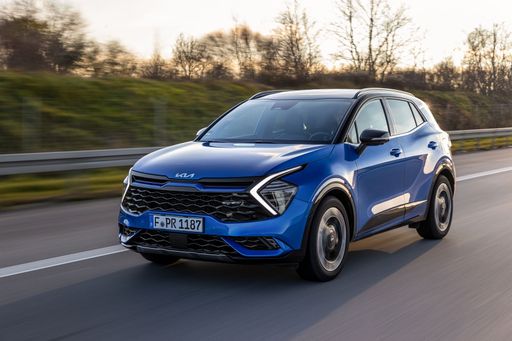 @ press.kia.com
@ press.kia.com
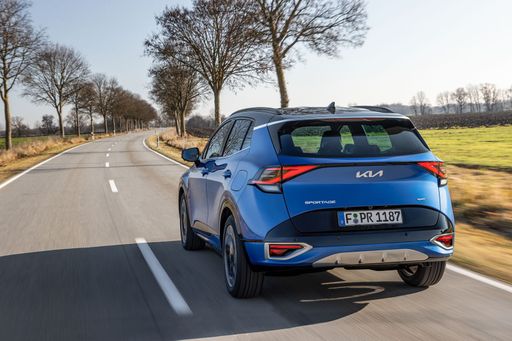 @ press.kia.com
@ press.kia.com
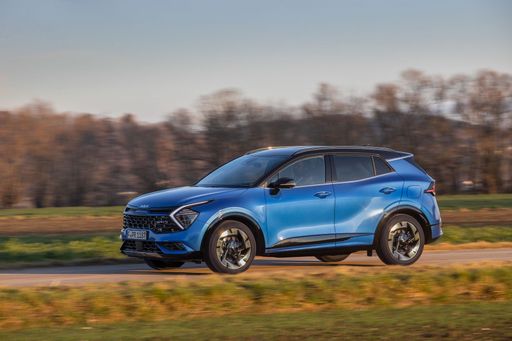 @ press.kia.com
@ press.kia.com
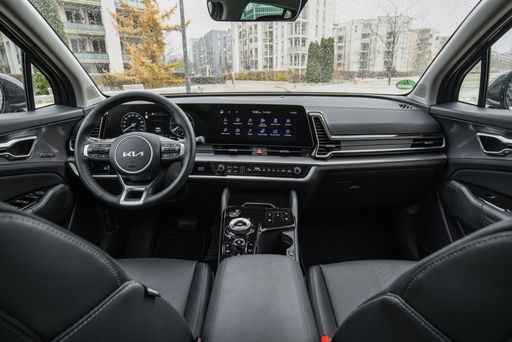 @ press.kia.com
@ press.kia.com
Hyundai Kona
The Hyundai Kona blends a bold design with a versatile interior, making it a standout choice in the compact SUV market. Its crisp handling and responsive steering provide an engaging driving experience, whether in the city or on the open road. The vehicle also offers a range of features designed to enhance comfort and connectivity, ensuring a pleasurable journey for both driver and passengers.
details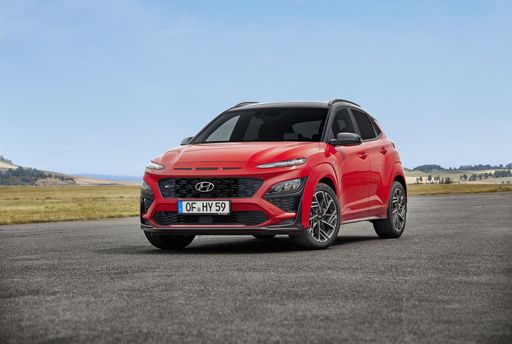 @ hyundai.news
@ hyundai.news
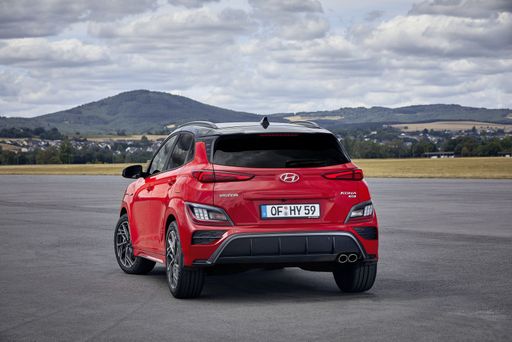 @ hyundai.news
@ hyundai.news
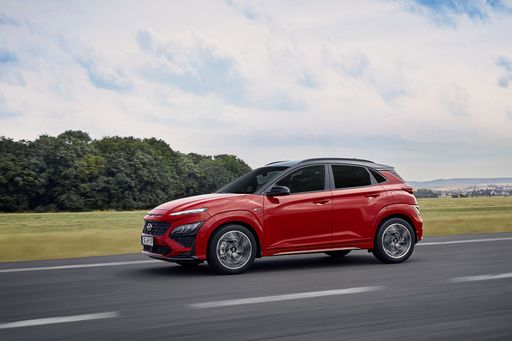 @ hyundai.news
@ hyundai.news
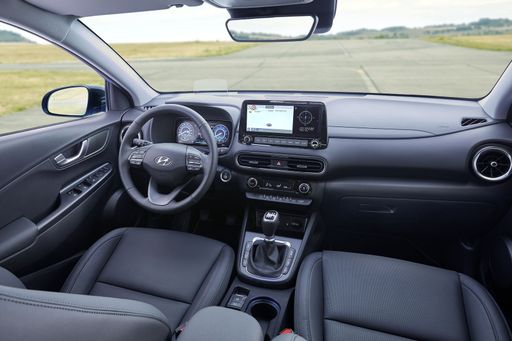 @ hyundai.news
@ hyundai.news
When it comes to compact SUVs, the Hyundai Kona and Kia Sportage stand out as two compelling options in the market. Both vehicles are designed to cater to modern drivers' needs, offering a blend of performance, innovation, and technology. In this comparison, we delve into the specifications, features, and unique aspects of both models to help you make an informed decision.
Design and Dimensions
The Hyundai Kona measures 4,350 mm in length, while the Kia Sportage is slightly larger at 4,515 mm. The Sportage also boasts a wider stance at 1,865 mm compared to the Kona's 1,825 mm, which may offer a more stable ride. Both models feature a five-door, five-seat setup, with the Kona offering a trunk capacity of 466 liters and the Sportage providing up to 587 liters of storage space, making the Kia a better option for those needing extra cargo room.
Engine Options and Performance
The Kona offers a diverse range of engine types, including petrol, full hybrid, and electric options, with power outputs ranging from 100 HP to 218 HP. The Sportage also features a variety of engine types, including diesel and hybrid configurations, with power outputs reaching as high as 252 HP for the petrol variant. Both SUVs provide manual and automatic transmission options, yet the Sportage’s acceleration capabilities are impressive, with the fastest variant going from 0 to 100 km/h in just 8.3 seconds, while the Kona's fastest version achieves the same in 7.8 seconds.
Fuel Efficiency
Fuel economy is a significant factor for many buyers, and here both models excel. The Kona's petrol engines provide consumption values between 4.5 to 6.7 L/100 km, while the hybrid options offer even further fuel efficiency. In contrast, the Sportage delivers an impressive range of 5.0 to 7.2 L/100 km depending on the engine choice. For eco-conscious drivers, the Kona’s electric version boasts a range of up to 514 km on a full charge, while the Sportage's hybrid variants, while not as extensive in electric range, offer an efficient solution for daily driving.
Technology and Innovations
Both models are equipped with cutting-edge technology that caters to modern-day expectations. The Kona features an intuitive infotainment system compatible with Apple CarPlay and Android Auto, allowing for seamless smartphone integration. The Kia Sportage also offers similar technology perks, with an emphasis on advanced safety features, including lane keep assist and smart cruise control, enhancing the driving experience.
Safety Ratings
Safety is paramount in both vehicles. The Kona comes with numerous safety features and has been rated highly in crash tests, offering peace of mind to its drivers. Meanwhile, the Sportage has embedded advanced safety technologies like blind-spot monitoring and rear cross-traffic alert, which further bolster its safety reputation. These innovations reflect both brands' commitment to passenger safety.
Interior Comfort and Features
Inside, both have a modern, driver-centric layout but with different character traits. The Kona has a sportier feel with its design and layout, while the Sportage leans towards a more elegant and spacious interior, providing ample legroom and headspace. Both vehicles offer premium upholstery options, with Kia leaning into luxury with its higher trims featuring leather seating and a panoramic sunroof for that added touch of opulence.
Conclusion
In summary, the Hyundai Kona and Kia Sportage both present excellent choices for buyers in the compact SUV market. The Kona excels with its electric variant and sporty performance, making it a great option for urban drivers looking for efficiency. On the other hand, the Kia Sportage shines with its space, power options, and advanced safety features, appealing more to families or those needing versatile cargo capabilities. The decision ultimately hinges on personal preferences regarding performance, space, and technology. Regardless of choice, both models underscore the remarkable innovations of Hyundai and Kia in today's automotive landscape.

|

|
|
|
|
Costs and Consumption |
|
|---|---|
|
Price
29700 - 44700 £
|
Price
23100 - 41600 £
|
|
Consumption L/100km
1.2 - 7.9 L
|
Consumption L/100km
4.6 - 7 L
|
|
Consumption kWh/100km
-
|
Consumption kWh/100km
14.6 - 16.8 kWh
|
|
Electric Range
64 km
|
Electric Range
377 - 514 km
|
|
Battery Capacity
-
|
Battery Capacity
1.3 - 65.4 kWh
|
|
co2
28 - 180 g/km
|
co2
0 - 163 g/km
|
|
Fuel tank capacity
42 - 54 L
|
Fuel tank capacity
38 - 47 L
|
Dimensions and Body |
|
|---|---|
|
Body Type
SUV
|
Body Type
SUV
|
|
Seats
5
|
Seats
5
|
|
Doors
5
|
Doors
5
|
|
Curb weight
1526 - 1905 kg
|
Curb weight
1370 - 1773 kg
|
|
Trunk capacity
526 - 587 L
|
Trunk capacity
466 L
|
|
Length
4515 - 4540 mm
|
Length
4350 - 4385 mm
|
|
Width
1865 mm
|
Width
1825 mm
|
|
Height
1645 - 1650 mm
|
Height
1580 - 1585 mm
|
|
Payload
510 - 580 kg
|
Payload
420 - 490 kg
|
Engine and Performance |
|
|---|---|
|
Engine Type
Diesel MHEV, Petrol MHEV, Full Hybrid, Petrol, Plugin Hybrid
|
Engine Type
Electric, Petrol, Full Hybrid
|
|
Transmission
Manuel, Automatic
|
Transmission
Automatic, Manuel
|
|
Transmission Detail
Manual Gearbox, Dual-Clutch Automatic, Automatic Gearbox
|
Transmission Detail
Manual Gearbox, Dual-Clutch Automatic
|
|
Drive Type
Front-Wheel Drive, All-Wheel Drive
|
Drive Type
Front-Wheel Drive, All-Wheel Drive
|
|
Power HP
136 - 252 HP
|
Power HP
115 - 218 HP
|
|
Acceleration 0-100km/h
7.9 - 11.6 s
|
Acceleration 0-100km/h
7.8 - 11.9 s
|
|
Max Speed
180 - 203 km/h
|
Max Speed
162 - 210 km/h
|
|
Torque
250 - 350 Nm
|
Torque
200 - 265 Nm
|
|
Number of Cylinders
4
|
Number of Cylinders
3 - 4
|
|
Power kW
100 - 185 kW
|
Power kW
85 - 160 kW
|
|
Engine capacity
1598 cm3
|
Engine capacity
998 - 1598 cm3
|
General |
|
|---|---|
|
Model Year
2024 - 2025
|
Model Year
2024 - 2025
|
|
CO2 Efficiency Class
D, E, F, B, G
|
CO2 Efficiency Class
A, D, C, E, F
|
|
Brand
Kia
|
Brand
Hyundai
|
Kia Sportage
The Kia Sportage: A Technological Masterpiece
The Kia Sportage has been a stalwart in the SUV segment, consistently offering excellent value, style, and performance. In its latest iteration, the Sportage pushes the boundaries with a fusion of advanced technology and innovative design, making it an enticing option for all types of drivers.
Power and Performance: The Heart of the Sportage
The new Kia Sportage boasts a broad range of powertrain options, ensuring there's something for everyone. Engines vary from efficient diesel mild-hybrids, petrol mild-hybrids, full hybrids, to cutting-edge plug-in hybrids. Output ranges from a nimble 136 PS to a robust 252 PS, providing a balance between efficiency and exhilarating performance.
The plug-in hybrid variant, in particular, sets new standards with an impressive electric range of 64 km, and a combined fuel consumption of merely 1.2 L/100km, positioning it as a leader in eco-friendly engineering.
Transmission and Drivetrain Advancements
The Sportage offers both manual and automatic transmission options, including advanced dual-clutch systems that ensure smooth and responsive gear shifts. Both front-wheel-drive and all-wheel-drive configurations are available, allowing the Sportage to handle diverse driving conditions with confidence.
A Sleek and Spacious Design
At 4515 mm long, the Sportage strikes a harmonious balance between offering a compact exterior for city driving while maximising interior space. With seating for five and a generous boot capacity ranging from 526 to 587 litres, the Sportage is designed with practicality in mind. The added benefit of a low aerodynamics-enhancing stance contributes to its efficiency and dynamic performance.
Innovative Features for the Modern Driver
Kia prioritises driver comfort and convenience in the Sportage, with the latest model featuring a suite of high-tech amenities. Depending on the trim, drivers can enjoy state-of-the-art infotainment systems, adaptive cruise control, and a range of safety technologies that earn high efficiency classifications, from B to F in CO2-efficiency class.
Pricing and Economy: Value for Every Penny
The Kia Sportage is available within a price range of €34,690 to €52,190, offering a cost-effective solution without compromising on quality or features. Monthly costs are optimised as well, ranging from €964 to €1,243, ensuring long-term savings alongside a lower environmental impact, with CO2 emissions between 28 to 162 g/km.
Conclusion: Why the Kia Sportage Stands Out
The Kia Sportage continues to solidify its position as a leading choice in the SUV market through its harmonious blend of technology, performance, and practicality. With such a wide range of configurations and trims, it caters to various needs, making it a versatile and intelligent investment for the environmentally conscious and the performance enthusiast alike. Whether for urban adventures or rural expeditions, the Sportage promises a journey defined by comfort, reliability, and innovation.
Hyundai Kona
The Hyundai Kona: A Comprehensive Overview
The Hyundai Kona has established itself as a standout in the compact SUV segment, blending innovation with performance and style. As the automotive world moves towards more sustainable and efficient options, the Kona offers a variety of powertrains, from traditional petrol engines to full hybrids and all-electric models.
Powertrain Options and Performance
The Hyundai Kona's powertrain choices cater to a wide range of preferences. For petrol enthusiasts, the Kona offers a 1.0L T-GDI engine, delivering 100 PS, and a more robust 1.6L T-GDI variant with up to 170 PS. Those looking for efficiency without sacrificing power can consider the full hybrid model, offering 129 PS and an impressive consumption of 4.5 L/100km.
For a greener option, the all-electric Kona provides a compelling case. With battery capacities of up to 65.4 kWh, the electric Kona offers power outputs of 156 to 218 PS, and efficiencies as low as 14.6 kWh/100km, enabling an electric range of up to 513 km.
Technical Specifications and Innovations
Built on a robust platform, the Kona delivers versatility and reliability. With a choice between manual or dual-clutch automatic gearboxes, along with options for front-wheel or all-wheel drive, the Kona ensures a tailored driving experience. The handling is enhanced by the car's lightweight construction, balancing a 1370 to 1773 kg curb weight with dynamic performance.
The Kona's design doesn't compromise cargo space for style; it offers a generous 466 L boot capacity. With a relatively compact body, measuring 4350 to 4385 mm in length, the Kona easily navigates urban environments while still commanding a strong road presence with its 1825 mm width.
Efficiency and Eco-Friendliness
Hyundai is committed to reducing emissions, as evidenced by the Kona's CO2 efficiency ratings, which range from class A for electric models to class D for some higher-performance petrol variants. The focus on reducing environmental impact without sacrificing driving pleasure is notable throughout the Kona range.
Costing and Value
The Hyundai Kona offers commendable value for money. Pricing starts at €26,400 and reaches up to €50,690, depending on the chosen configuration. The monthly running costs range from €956 to €1090, with a cost per kilometre of 38.3 to 43.6 cents, making it a competitive option in its class.
Conclusion: Modern, Efficient, and Versatile
The Hyundai Kona stands as a testament to Hyundai's commitment to innovation, efficiency, and practicality. Whether you are inclined towards a traditional combustion engine, a hybrid for a balance of power and efficiency, or a full electric model for maximum eco-friendliness, the Kona provides a tailored solution for each unique driver preference.
Which drive types are available for the Kia Sportage?
Available as Front-Wheel Drive or All-Wheel Drive.
The prices and data displayed are estimates based on German list prices and may vary by country. This information is not legally binding.
